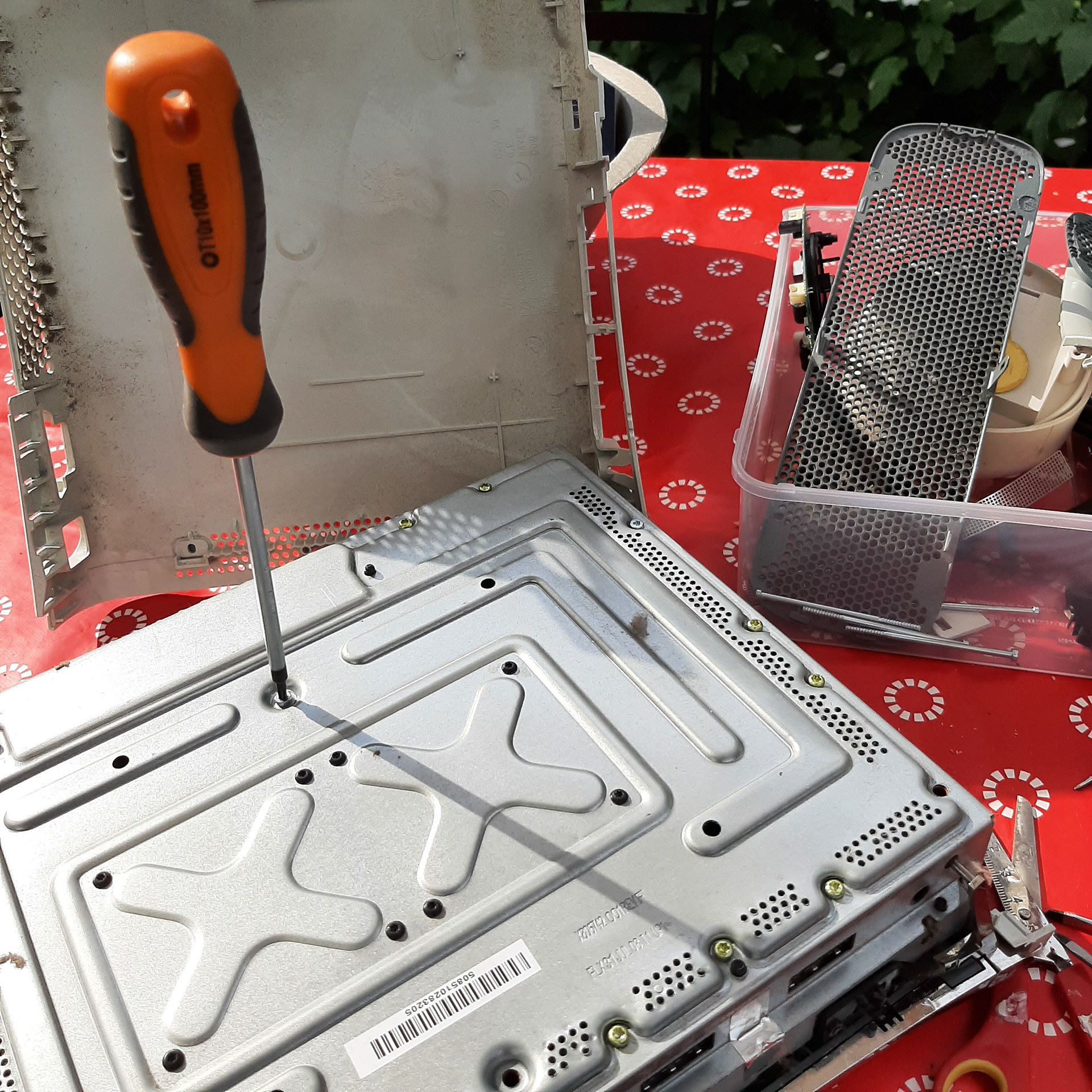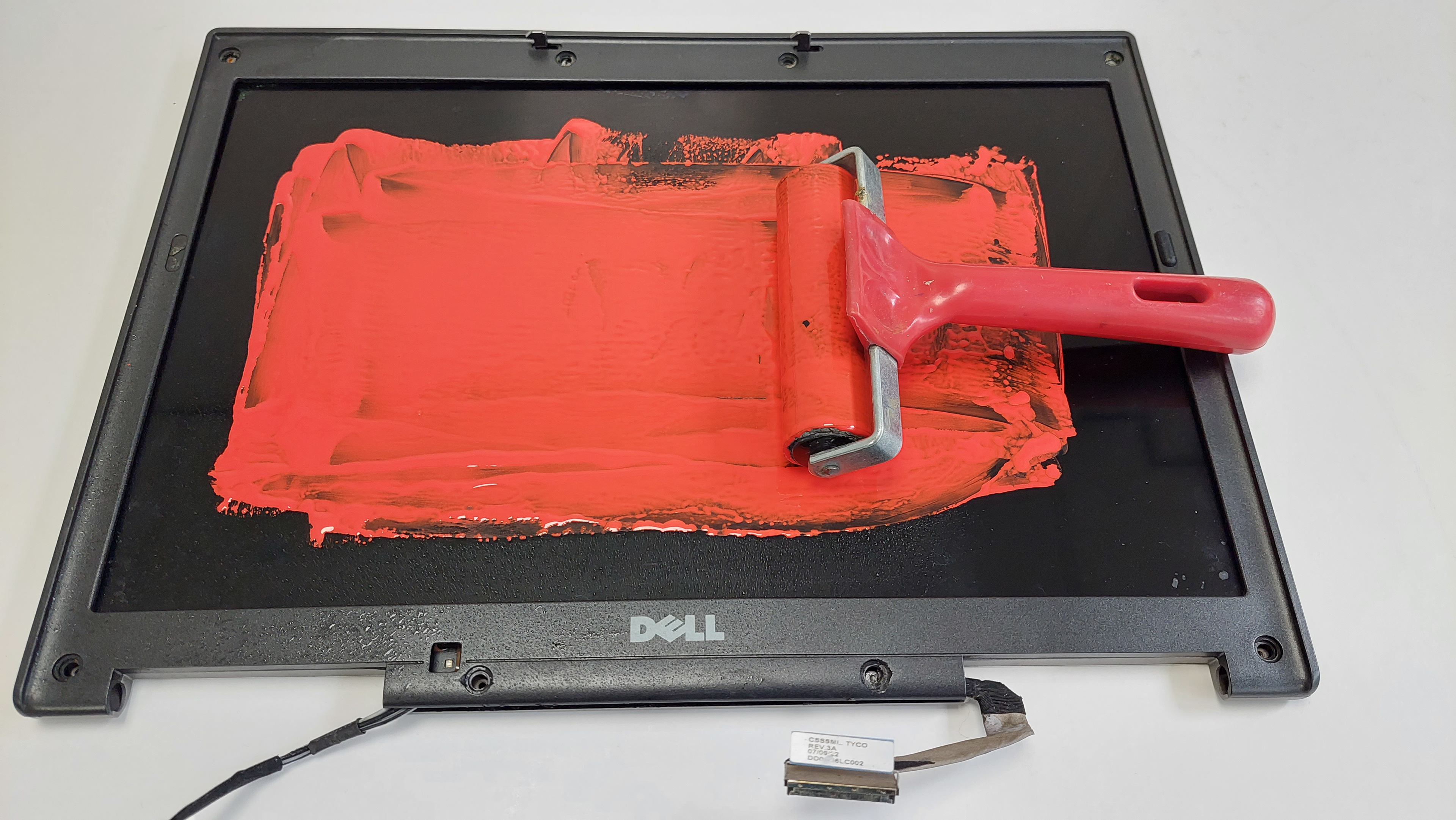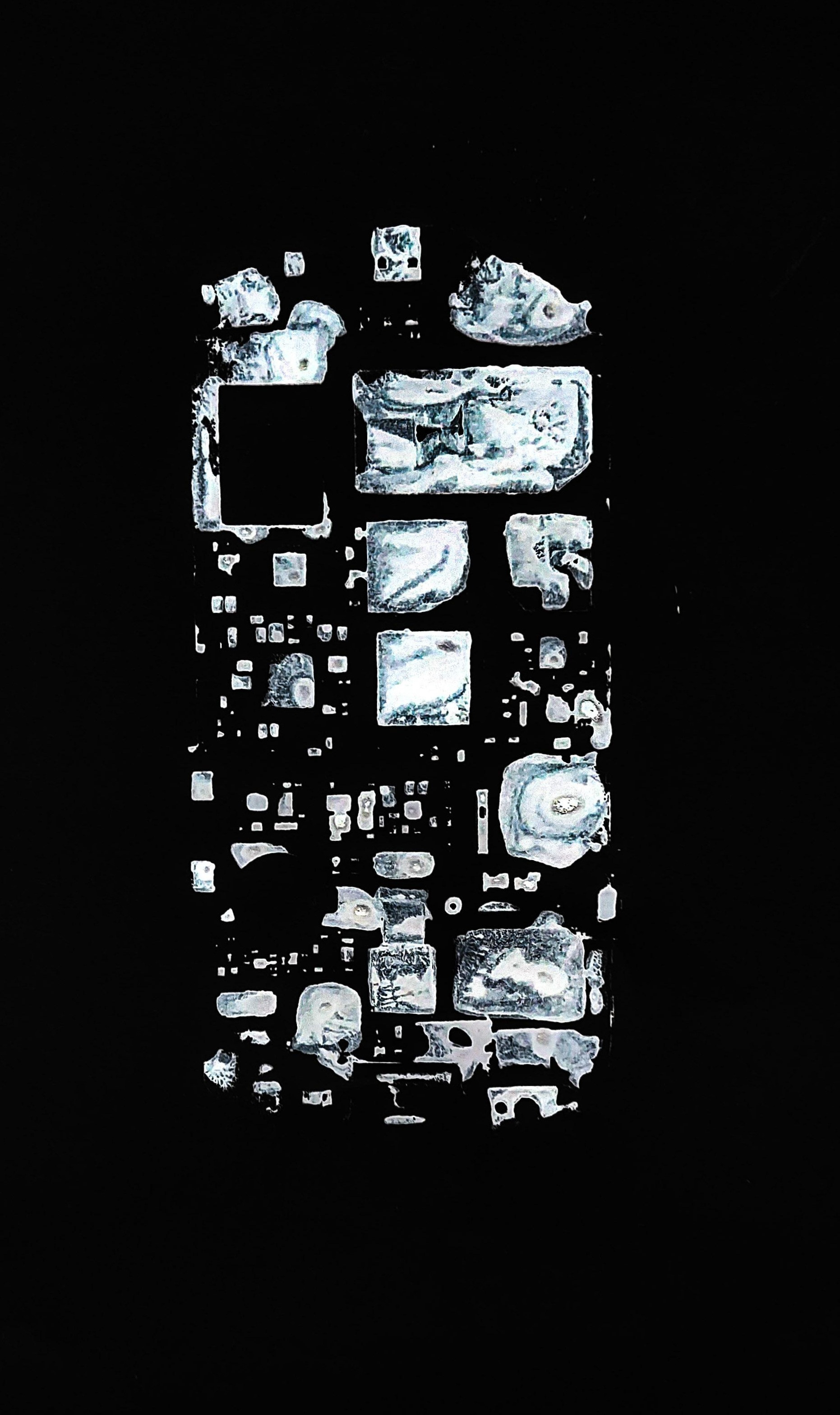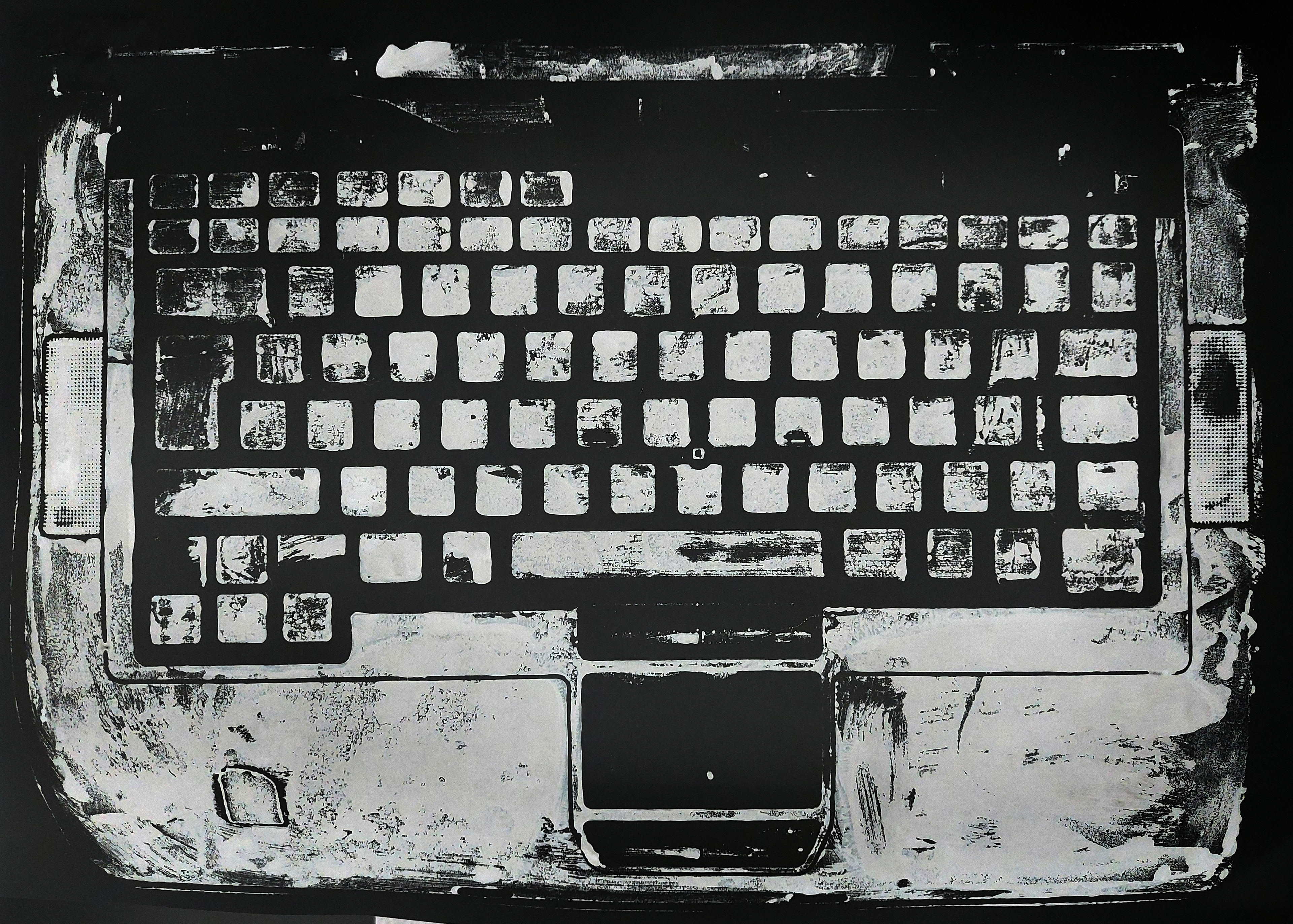Brian Gibson
Just what is it that makes today's technologies so different, so appealing?
My work investigates issues surrounding technology. Originating from the principle of working with what’s at hand, I work with e-waste, the discarded materials of domestic tech. I deconstruct items such as laptops and mobile phones as a way of seeing technology outside of its digital and data driven framework.
Another Time 2021


The shops are closed, the streets are quiet, there’s a pandemic going on: it’s no lightweight matter. Still, at home looking out to a world through a screen, there’s some contentment to be found in being creative. I recall something once read or heard that, “everything that you ever need to photograph is in and around where you live”, or words to that effect. It makes sense to me. I’m working with what’s at hand, the standard art materials of pen and paper, the ubiquitous phone camera, and the lingering, no longer functioning devices of domestic tech - mobiles, laptops and games consoles. Keeping it together by taking things apart. Reconstructing - to create something new, all gates are open. The only proviso is that I’ve set myself is that whatever I create will remain as a piece of tech that no longer works as tech. The notion of the reconstructed object has been an important part my work for some time, working with what’s familiar – close at hand - developing new narratives, reworking old family photographs, using software to cut and paste folk from the past, putting them into new surroundings - new interpretations to sit with the old.


Reworking technology is exploratory, enabling new narratives to evolve over time. I do this through a range of artistic processes that includes mono-printing, photography, assemblage, and film.
I am interested in questioning the relationships that we have with technology How we engage with it and how to claim agency over developments that seem outside of user control.



My work also looks into the search for ecological solutions within technology and considers the architectural spaces of tech interiors and the constructed world around us.